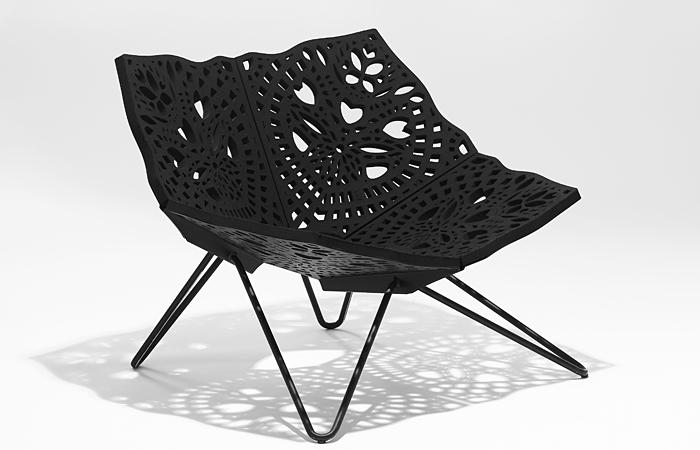
Other areas /
Google Ads
Louise Campbell: If it works in paper…Campbell is a designer who moves in many different directions at once as she designs furniture, lighting, and tableware. Campbell describes her work as "furniture for all occasions, from dignity to indecency." |
SUBSCRIBE SEND AS EMAIL |

|
|
|
Louise Campbell's 'Prince chair'
|
1 |
|
Based in Copenhagen, Louise Campbell is a designer who moves in many different directions at once as she designs furniture, lighting and tableware. Campbell describes her work as "furniture for all occasions, from dignity to indecency," producing superlative sweeps like the ‘Sushi’ chair and the intricate, laser-cut 'Between Two Chairs’ pair that she designed for Denmark’s crown prince. Campbell’s three-year consultancy with Louis Poulsen Lighting culminated in her Louis Poulsen Project – a collection of fourteen lamps developed to showcase new approaches to lighting design. As a result, her ‘Campbell’ pendant lamp was introduced in 2004, with a second lamp released the following year.
All of Campbell’s work is based on three simple rules: "Always start from scratch, find the core of the issue and dare to be different." Based in Copenhagen, Campbell set up her studio in an old workshop in the heart of the city. (Shortly after moving in she discovered that the sloping floor drops nearly 30cm from one end of the studio to the other. This means that all of the studio’s mess and coffee-spills eventually end up at the far end of the space, right next to Louise!) What is your starting point: materials or ideas? I often find completely new directions to work in by toying with materials without a specific purpose. This sandpit approach always provides inspiration, and the ideas follow. Experimentation lies at the heart of Campbell's work. She often explores unique materials or comes up with new processes in her designs. "I wanted to fold a chair from a single piece of perfectly square felt, and I wanted to harden it with an equally natural material," she explained. "I tested various solutions before I opted for gelatin. After dipping the felt in a huge basin of water and 750 sheets of dissolved domestic gelatin (an exercise which required timely precision, as the gelatin goes lumpy within about ten minutes), the wet material was suspended within a large wooden frame by hundreds of meticulously positioned strings. The felt was left to dry for two weeks before being dismantled. In all, a very low-tech way of achieving a rather complex and surprisingly strong construction. Why do all this? To see what would happen. Was it a waste of time? Certainly not. This chair has inspired many of my later works." Exploring new materials can sometimes have unexpected results. Campbell explained: "A colleague and I designed a lamp that combined dyed latex with fiberglass, and the result was beautiful. The lamp was soft and bouncy to the touch, and the coloring possibilities were endless. The structure was unusual, and filtered the light very well. The really fascinating part of this combination of materials, which were layered by hand over a mould, was the fact that no two lamps were the same due to the nature of fiberglass. Just by coincidence, we created an industrial process that allowed for uniqueness in each piece, turning a dream that all designers have into reality." "The one material that inspires me more than all the rest put together is plain paper. If an idea, particularly with regard to furniture design, works in paper, it is bound to work in other materials as well. The ease with which one can sit down with a pile of white paper, a pair of scissors and a roll of tape, and just let loose is incredible. Every time I do this, something useful appears between my fingers." Written by Bradley Quinn |
Other articles on Design / Nordic Design Now Scandinavian design: Beyond Blond Driving fashion forward Design in Sports Mathias Bengtsson: Redefining boundaries Trine Andersen: Wallpaper, contemporary walls Johan Verde: Design to lift, angle, clean and store Maija Louekaris: Channeling a spirit Johan Carpner: To capture the untamable Nina Jobs: Impressions of depth
|
800 827 9333 © Copyright Nordic Reach 2008